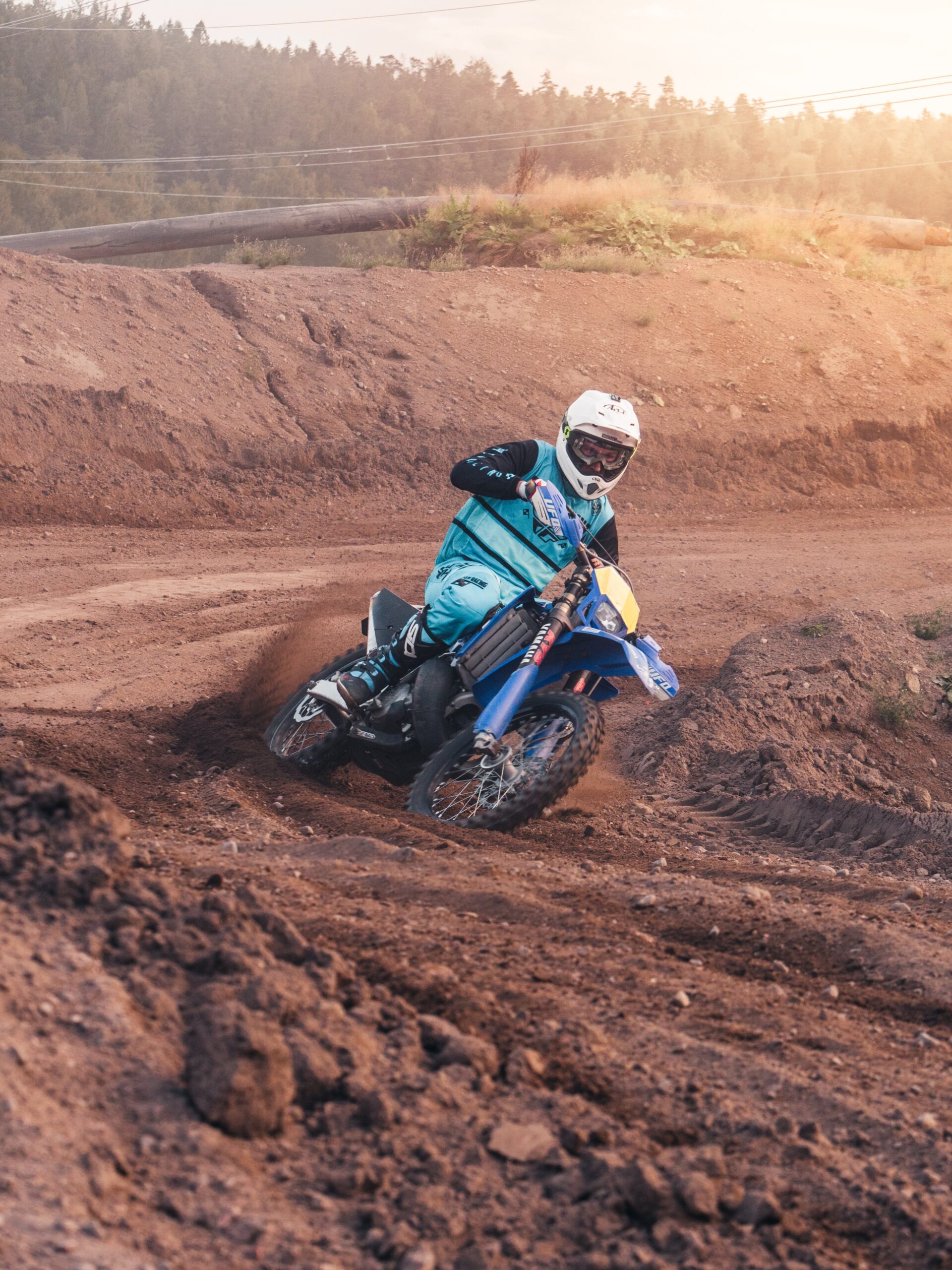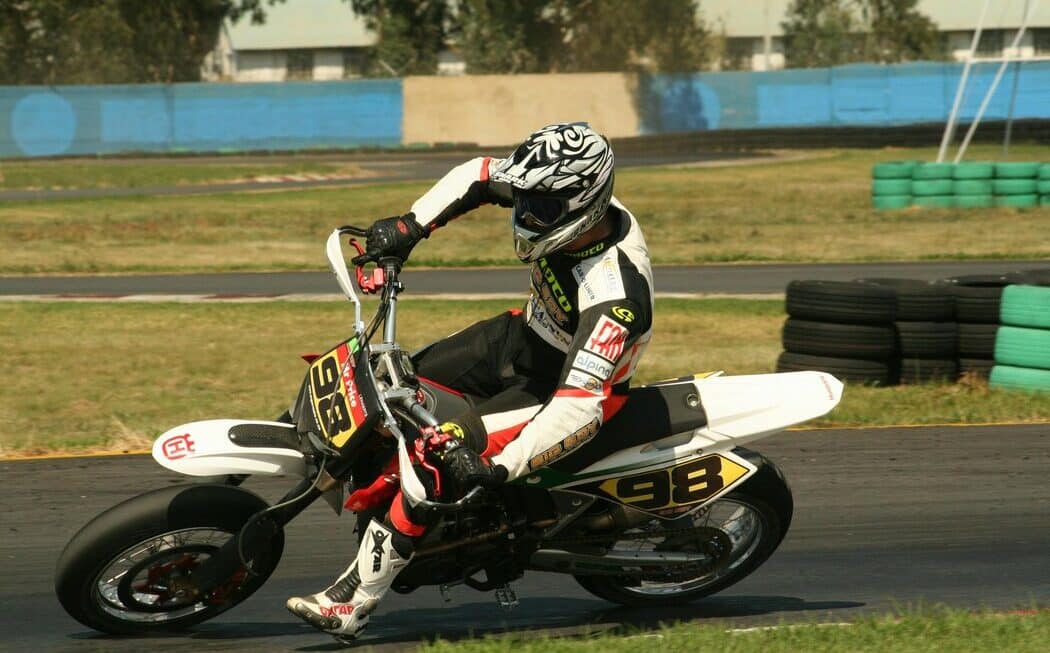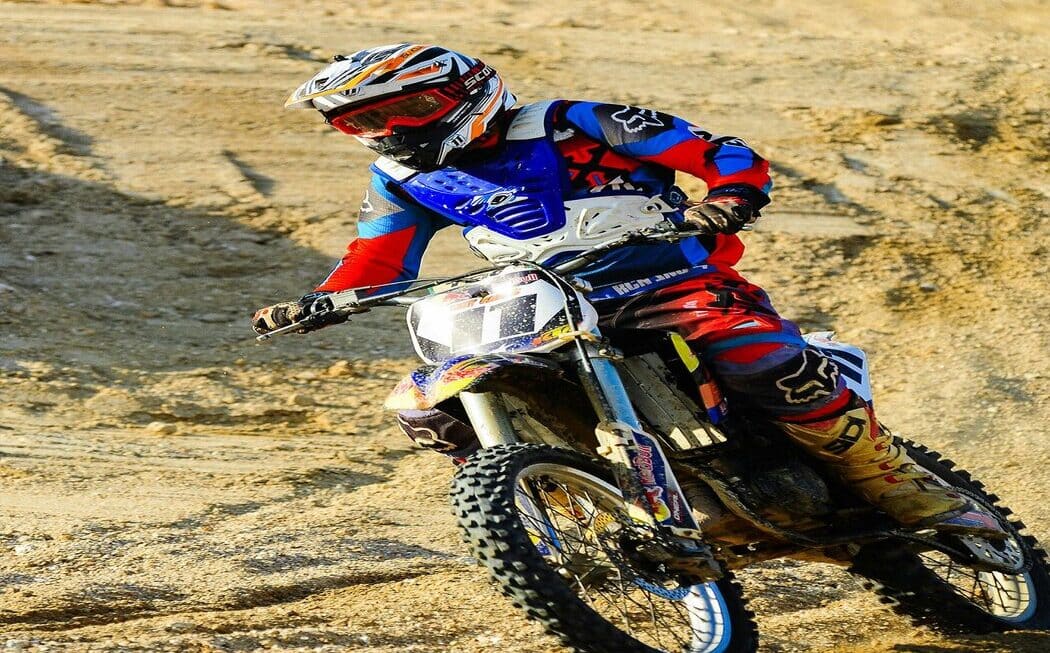Dirt biking is an incredibly exciting and popular way to explore the outdoors with friends. They have powerful engines and awesome maneuverability. If you’re new to dirt biking, however, it can be intimidating trying to learn the basics. That’s why we created this ultimate guide: so that you can quickly master the fundamentals of dirt bike riding.
You don’t need prior experience or a specialized instructor to start learning how to ride a dirt bike. All you need is some guidance on setting up your bike, how to progress through stages of skill development, and basic safety precautions. This guide provides all that. With our guide as your companion, you can take your very first steps into the adrenaline-filled world of dirt biking with ease.
Tips for Dirt Bike Riding for beginners
In any kind of power sport activity, such as dirt biking, safety should be the number one priority. Every rider should start by investing in a proper helmet to ensure maximum protection while out on the trails. Off-road helmets are designed especially for these activities and come with a chin guard to protect from facial injuries.
Eye protection is also key when riding off-road. Natural hazards like wind, branches, and dust can all pose dangers for any rider’s eyes if not properly protected by high-quality goggles or eyewear specifically made for sports like off-roading. Many times these protective glasses or goggles don’t come included on the helmets so riders have to invest in their pair separately in addition to the helmet they purchase. Investing in a high-quality set of goggles will help riders stay safe even during hazardous conditions.
Things to Know Before Starting
Starting a dirt bike is no easy task. Having the proper knowledge of where all controls are and what they do can make the starting process much simpler. The first step to learning how to start your dirt bike is to familiarize yourself with its layout. The left handlebar holds the clutch lever while a foot shifter is just in front of the left foot peg. On the right handlebar, you have the throttle which gives your bike gas while on the opposite side, near the gas tank, you have your kickstart. Once you know where everything is located, it’s time to get it running!
Before proceeding to start up your dirt bike, double-check that it has enough gas in the tank. From here you will need to set your bike into gear by squeezing the clutch lever and using your shifting foot to select any gear but neutral. Use one leg to push down on the kickback starter while twisting open the throttle with your other hand. You may need to repeat this several times until an engine spark appears and then keep rotating until it starts up completely. Don’t forget about safety precautions like wearing proper gear before you hit that throttle!
Here we have explained some basic skills for dirt bike riding:
Managing the Throttle
Mastering the throttle when riding a bike for the first time is an essential skill that takes some getting used to. Accurately gauging the amount of throttle needed can be difficult, as too much can result in being thrown off the bike while too little will cause it to not move at all. The most important thing to remember is practice makes perfect – you won’t get it right every time.
When starting, it’s best to begin by slowly increasing the throttle and testing out how much your bike needs before releasing the clutch. As you become more comfortable with controlling the bike, steadily increase how much you apply until you find a comfortable level of control over your speed and acceleration. Be mindful of increasing your throttle slowly as taking corners becomes more challenging due to increased speed. It also helps to pay attention to road conditions so that you don’t cause yourself or others injury from sudden stops or excessive speeds on slick roads. With enough practice comes muscle memory so that manipulating the throttle will eventually become second nature!
Clearing the Engine
A flooded engine is a common issue that can affect the performance of any motorcycle. It occurs when too much fuel enters the combustion chamber and prevents the spark plug from igniting it. To clear a flooded engine, first, twist the throttle wide open and hold it in that position. Then kick the engine through until it fires up, never shutting off the throttle as this could cause a kickback. Wear protective gear, such as boots, when attempting to start up your bike.
For bikes with FCR carburetors, prevent flooding from occurring by resisting any urge to twist the throttle when the bike is off. This will ensure better performance and trouble-free operation down the line. To avoid a flooded engine in general, check that your air filter is clean before starting up each ride. Make sure you’re getting sufficient air for combustion within the combustion chamber, and adjust overflow valves on single segments if needed. With these simple tips in mind, you’ll have no problem clearing flooded engines going forward!
Use Your Choke
The choke is an essential part of operating a carbureted bike. When the engine is cold and the air around it is cold, the choke should be turned on. On many bikes, this knob or lever can be found near the handlebars and is usually pushed out or up to signify that it’s on.
Before attempting to start the bike, make sure the choke is engaged. Once started, depending on the model of carburetor used, among other things, riders should then shut off the choke immediately when starting on a fuel-mixing variety of carburetors, ones that don’t run on a regulated vacuum system, or after running for a minute when using a vacuum-system type since regular use of this function can lead to premature deterioration of parts in this system. Using your bike’s choke correctly makes all the difference between having a smooth-running engine and one that simply just doesn’t perform as expected due to improper use.
Putting Dirt Bike in Gear
Putting your dirt bike in gear is an important skill to master for off-roading. The first step is to make sure the motor is running, then pull on the clutch and click the shift lever into the first gear. If you have a clutchless kids’ bike, check that your engine is at a steady, mild idle, otherwise, it can jump forward suddenly when you put it in gear. Some bikes for really small kids don’t have a clutch and are always in gear so double check Junior doesn’t accidentally twist the throttle before getting on!
When your motor is running and you’re in gear, take off with caution – keep your left hand firmly on the clutch all the way and carefully scroll down with your right hand until you hit fifth or sixth gear depending on what type of terrain you’re tackling. Pay attention to speed limits while you’re riding too! If you practice this method regularly, shifting between gears will become second nature and ensure a safe, fun ride every time.
Letting out the Clutch
Letting out the clutch is a skill that every prospective driver must understand and master to drive safely and efficiently. The key to letting out the clutch is all about speed and control. Begin by allowing the engine to reach a steady RPM at approximately 1/8 of a throttle. Then, slowly and steadily let out the clutch while making sure not to allow too much gas nor too little. To make sure you are doing it correctly, practice slips in neutral with just your left hand controlling the clutch. This will help you gain more control with your left hand over time. In this way, you can use just two fingers when driving instead of four.
Covering ten feet of moving forward space with a partially engaged clutch before letting it out is an important factor. If you feel the engine beginning to die down, rather than increasing your gas flow. Reduce your motion on the clutch and maintain your throttle pressure constant so you can adjust accordingly. Once you have mastered this step, increase your speed gradually until you understand road behavior. Keep in mind external conditions like wind or terrain along with different types of vehicles including bikes, for safety purposes.
Braking Techniques
Properly applying your dirt bike’s brakes is essential to mastering it off-road. Most dirt bikes feature a front and rear wheel brake, with the front brake being more sensitive and thus requiring more finesse for skillful control of the bike. You should find yourself using shorter and sooner brake applications when braking on bumpy terrain.
When you are riding in sand or mud, however, your braking techniques need to change significantly. These types of surfaces call for gentler altogether brakes as any sudden jerking movements caused by heavy pressing of the brakes can worsen the situation. Try to ensure that your brakes are operated moderately. With practice, this skill can be mastered allowing you greater freedom over terrain that may otherwise seem insurmountable.
Your First Rides
Any aspiring dirt bike rider needs to take the time to learn the basics and practice before feeling comfortable enough to take on tougher terrain. One great way to get a good foundation is to enroll in a Motorcycle Safety Foundation (MSF) class. The MSF is a nonprofit that offers some of the best power sports safety courses available, and their one-day Dirt Bike School programs provide fun instruction from professional coaches. Not only are these an excellent starting place but they can even be taken by children as young as six years old, making it easy for even early learners to safe and effective techniques from the start.
After taking a class with the MSF, the next step is to jump on a dirt bike and ride. While people may feel tempted to rush into more difficult riding situations before they’re properly ready, it’s important to take things slow and progress gradually. Spending several hours gaining experience in shorter rides makes it much less likely that one will find themselves in a dangerous situation out on the trails or off-road tracks. It also helps ensure riders build up confidence in their skills over time rather than simply hoping for luck while tackling more difficult obstacles.



